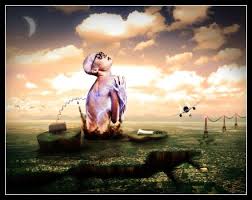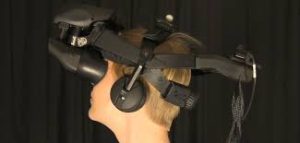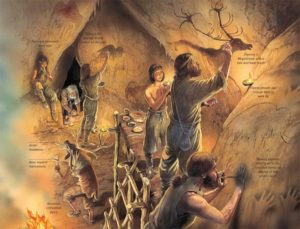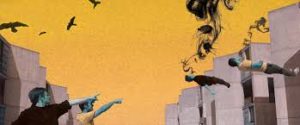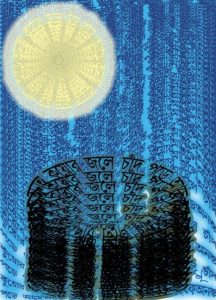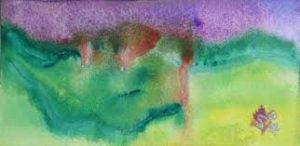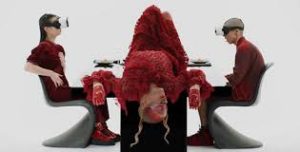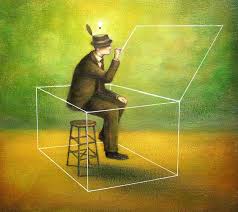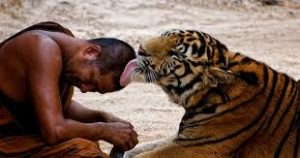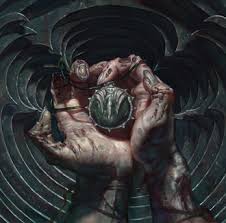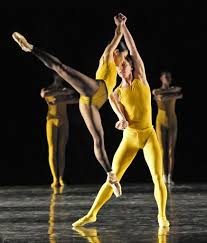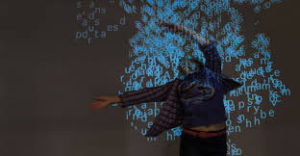Part of the difficulty arises from the current scientific-oriented blend of rationalism. As a species, we think of ourselves as the “pinnacle” end of an evolutionary scale, as if all other entities from the first cell onward somehow existed in a steady line of progression, culminating with animals, and finally with man and woman the reasoning animal. (with all of that progress occurring of course by chance, incidentally.)

That particular blend of rational thinking with which our society is familiar takes it more or less for granted, then, that man’s and woman’s identity as a species, and the identity of the individual, is first and foremost connected with the intellect . We identify ourselves with our intellect, primarily, casting aside as much as possible other equally vital elements of our personhood.

In our historical past, when man and woman identified his or her identity with the soul, he or she actually gave himself or herself greater leeway in terms of psychological mobility, but eventually the concept of the soul as held resulted in a distrust of the intellect. That result was the inevitable follow-up of dogma. Part of man’s woman’s latest over-identification with the intellect is, of course, an overreaction to those past historical events. Neither religion or science grant other creatures much subjective dimension, however: We like to think of ourselves, again, as the reasoning animal in terms of our species.

However, animals do reason. They do not reason in the same areas that we do. In those areas in which they do reason, they understand cause and effect quite well. Their reasoning is applied, however, to levels of activity to which our own reasoning is not applied. Therefore, often animal reasoning is not apparent to us. Animals are curious. Their curiosity is applied to areas in which we seldom apply our own.

The animals possess a consciousness of self, and without the human intellect. We do not need a human intellect to be aware of our own consciousness. Animals, it is true, do not reflect upon the nature of their own identities as man and woman do, but this is because that nature is intuitively comprehended. It is self-evident.

I only want to show that the sense of identity need not inevitably be coupled with the intellect exclusively. Our intellect is a part of us — a vital, functioning portion of our cognitive processes — but it does not contain our identity.

The natural person is understood perhaps more clearly by considering any person as a child. In fashion the child discovers its own intellect, as it discovers its own feelings. Feelings come “first.” The child’s feelings give rise to curiosity, to thoughts, to the operation of the intellect: “Why do I feel thus and so? Why is grass soft, and rock hard? Why does a gentle touch soothe me, while a slap hurts me”

The feelings and sensations give rise to the questions, to the thoughts, to the intellect. The child in a fashion feels — feels — its own thoughts rise from a relative psychological invisibility into immediate, vital formation. There is a process there that we have forgotten. The child identifies with its own psychic reality first of all — then discovers its feelings, and claims those, and discovers its thoughts and intellect, and claims those.

The child first explores the components of its psychological environment, the inside stuff of subjective knowledge, and claims that inner territory, but the child does not identify its basic being with either its feelings or its thoughts. That is why, for example, it often seems that young children can die so easily. They can disentangle themselves because they have not as yet identified their basic beings with life experience.

In most cases children grow up, of course, although in the vast overall picture of nature a goodly proportion of individuals do indeed take other courses. They serve other functions, they have other purposes, they take part in life through a different cast of action. They affect life while themselves not completely immersed in it. They die young. They are aborted. They remain, however, an important element in life’s overall picture — part of a psychological underpainting that always affects later versions.

Ideally, however, children finally claim their feelings and their thoughts as their own. They identify naturally with both, finding each valid and vital. By the time we are an adult, however, we have been taught to disconnect our identity from our feelings as much as possible, and to think of our personhood in terms of our intellectual orientation. Our identity seems to be in our head. Our feelings and our mental activity therefore appear, often, quite contradictory. We try to solve all problems through the use of reasoning alone.

We are taught to submerge the very intuitive abilities that the intellect needs to do its proper work — for the intellect must check with the feeling portions of the self for feedback, for support, for knowledge as to biological conditions. Denied that feedback, it can spin on endlessly in frenzied dry runs.

At each moment, from the most microscopic levels the body in one way or another is ascertaining a constant picture of its position within physical reality. That picture is composed of millions of ever-changing smaller snapshots, as it were — or moving pictures is better — determining so many conditions, positions and relationships that they could never be described. We end up with a predominating picture of reality in any given moment — one that is the result of the activity of psychological, biological, and electromagnetic strats. One picture is transposed upon the others, and calculations made constantly, so that all of the components that make up physical existence are met, and intersect to give us life.

None of that is the intellect’s concern at an intellectual level. At a biological level, and at an electromagnetic level, the intellect, of course, performs feats that it cannot consciously know through the use of its reason. Spontaneously, with the process just mentioned, millions of pictures are being taken also of the probable actions that will — or may — be needed, in our terms, in the moment immediately following, from microscopic action to the motion of a muscle, the driving of a car, the reading of a book, or whatever.

One of the intellect’s main purposes is to give us a conscious choice in a world of probabilities. To do that properly the intellect is to make clear, concise decisions, on its level, of matters that are its concern, and therefore to present its own picture of reality to add to the entire construct. On the one hand we have been told to identify ourselves almost completely with our intellects. On the other hand, we have been taught that the intellect, the “flower of consciousness,” so frail, vulnerable adjunct — again, a chance creation, without meaning and without support without support because we believe that “beneath it” lie “primitive, animalistic, bloody instincts,” against which reason must exert what strength it has.

Despite all of that, men and women still find the solutions to many of their problems by rediscovering the larger sense of identity — a sense of identity that accepts the intuitions and the feelings, the dreams and the magic hopes as vital characteristics, not adjuncts, of personhood. When I tell you to remember your own natural persons, I do then want to remind you not to identify with your intellect alone, but to enlarge you scopes of identity. Automatically those other, often-shunted-aside characteristics begin to add their richness, fulfillment, and vitality to your lives effortlessly.

This new orientation will bring results, and the results do appear effortlessly. Remember that creative activity goes on within us all the time, and is often most active precisely when we are not aware of it. We are only aware of those moments when creative activity surges into our conscious awareness, and by then much of the “work” has already been done.

We are not responsible for other people’s realities, but we are responsible for our own. The Ill man’s or woman’s reality does not threaten our own in any way. The situation, however, shows that we sometimes still think we should be able to solve all problems, and to know all the reasons for any given sorrow or tragedy. The intellect cannot handle that kind of information at this level.

Some answers come when we are ready for them. Then they come naturally, as a matter of understanding and comprehension. The question of life’s tragedies still cannot be answered satisfactorily at the level at which any of us are currently asking it. I can give hints and clues and explanations that are quite valid within that context.

As a matter of fact, the kind of literal answers that we may think we want can indeed lead us somewhat astray in terms of the larger picture, so I must say: “That is not my province,” send energy, a note now and then; but the particular problem, the specific problem is the other’s, not mine’s.”

The reason for the problem is a philosophical concern of mine and of yours, but it is one whose answer — or answers — will gradually unfold. All of this information I consider necessary, again, to provide an overall atmosphere of comprehension that will allow the release of our own vitalities and strengths in an effortless manner, in such a way that our own problems begin to dissolve.
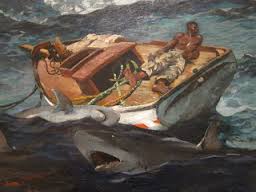
The kind of orientation I am speaking of represents the truest picture I can give of a man’s and woman’s natural relationship with himself or herself and the world. This is how it works. This is physical.









